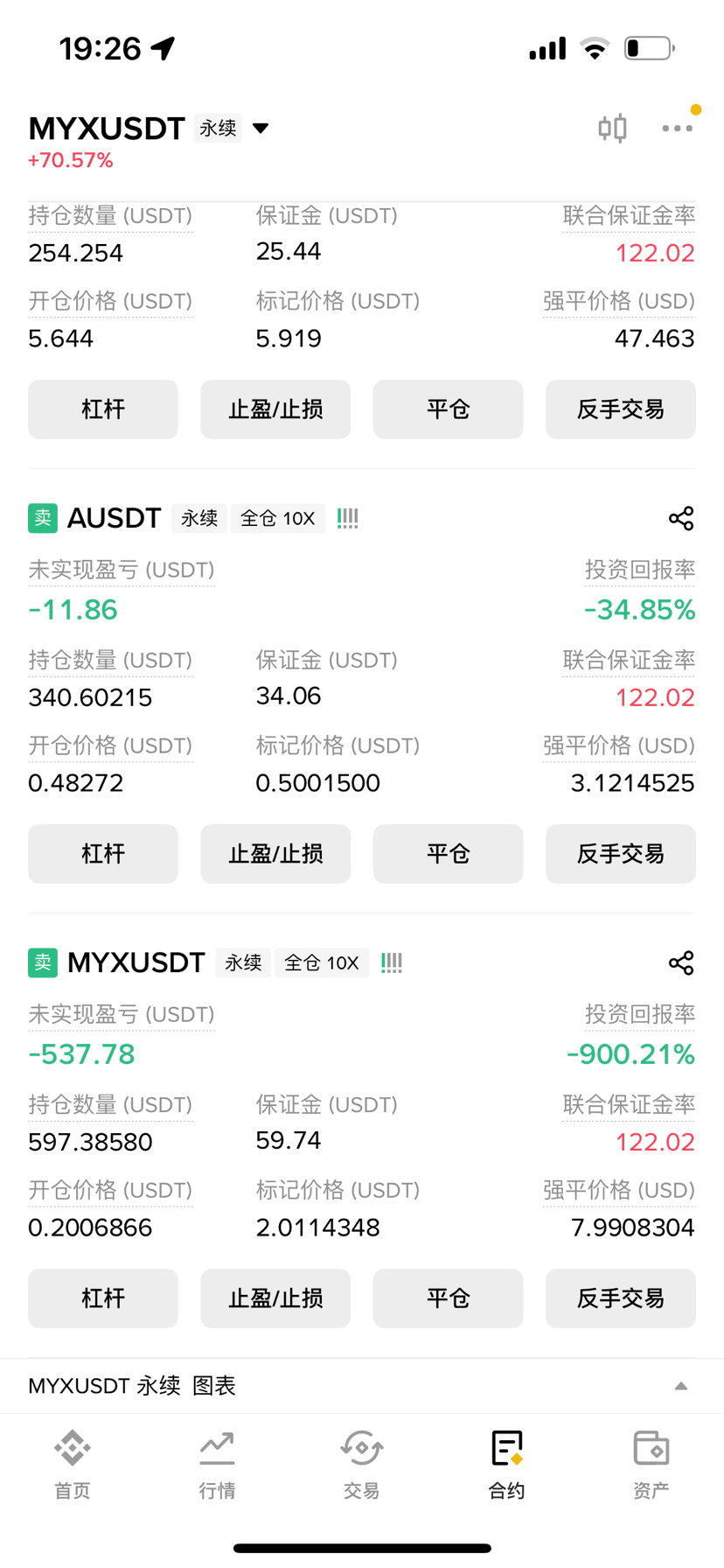This statement means that in financial markets (such as futures or contract trading), the risks of **going long** and **short selling** are asymmetric. Here is a detailed explanation:
1. Going long can lose at most one times:
- Going long means buying an asset (like MYX contracts), expecting the price to rise. If you invest 100 yuan to go long and the asset price drops to 0 (the most extreme case), you could lose a maximum of 100%, meaning your principal (100 yuan) would be entirely lost.
- Example: You buy 10 MYX contracts at a price of 10 yuan, with a total investment of 100 yuan. If the price drops to 0, you lose 100 yuan, exhausting your principal, and cannot lose more.
2. Short selling can lose 100 times:
- Short selling refers to borrowing an asset to sell it, expecting to buy it back at a lower price after the price drops, thus earning the difference. However, if the price rises, there is theoretically no limit to the loss, and your losses could far exceed your principal.
- Example: You short sell 10 MYX contracts at a price of 10 yuan, with a margin investment of 100 yuan (assuming a leverage ratio of 1:10). If the price rises to 1000 yuan, you need to buy back at 1000 yuan to repay the debt, losing 990 yuan per contract, totaling a loss of 9900 yuan, which is 99 times your principal. If the price continues to rise, the loss could be even greater, potentially reaching '100 times' or more in extreme cases.
- The amplification of losses in short selling is mainly due to:
- Leverage: Contract trading often uses leverage (such as 10x, 20x), which amplifies profits but also amplifies losses.
- Price increase has no upper limit: When short selling, the price could rise far beyond your margin, leading to substantial losses.
3. Why short selling carries higher risk:
- When going long, the asset price can drop to a minimum of 0, limiting losses.
- When short selling, the price increase theoretically has no upper limit, and losses may far exceed the principal, especially in high-leverage trading.
- The exchange may require additional margin (Margin Call), and if you cannot meet the margin requirement, they will forcibly close your position, locking in substantial losses.
4. Regarding your situation (losses in MYX contracts):
- You mentioned losing a lot of money short selling MYX contracts, which may be due to a significant price increase beyond your margin capacity.
- Recommendation:
- Check the leverage ratio: High leverage (like 20x, 50x) can rapidly amplify losses. Reducing leverage can decrease risk.
- Setting stop-loss orders: Set a stop-loss point before short selling to limit maximum losses.
- Understanding contract rules: The specific leverage, margin requirements, and forced liquidation mechanisms of MYX contracts need to be studied carefully.
- Risk management: Only invest what you can afford to lose, and avoid using all your capital.
- If you need a specific analysis of your loss situation, you can provide more details (such as leverage, position size, price fluctuations), and I can help you analyze further.
5. Summary:
- Going long has limited risk, with a maximum loss of the principal (1x); short selling has theoretically unlimited risk, with potential losses of dozens or even hundreds of times your principal, especially under high leverage.
- Short selling requires caution; it is recommended to strictly control position size, set stop-loss orders, and ensure you understand market trends and contract mechanisms.
If you have more details or want to analyze specific trades, I can assist you further!
